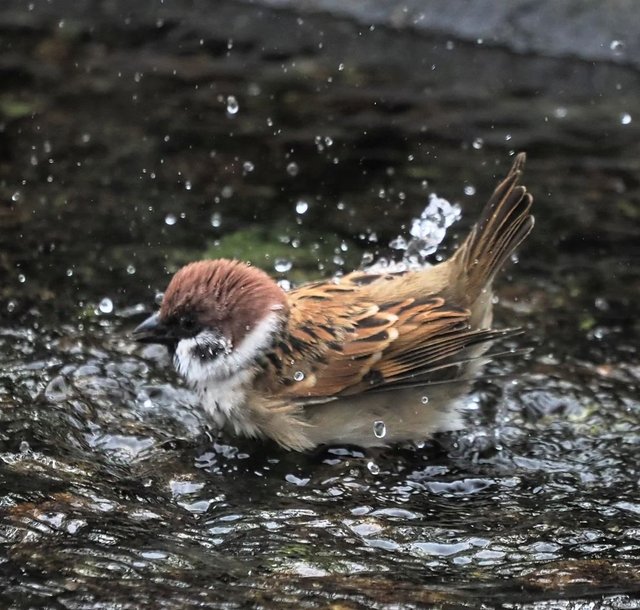The Eurasian Tree Sparrow: A Small Bird with Big Charm
The Eurasian tree sparrow is a small yet captivating bird that is native to a wide range of habitats across Europe and Asia. Known for its modest size and distinctive markings, this sparrow is often overshadowed by its more flamboyant or larger avian cousins. However, it holds a special place in the ecological tapestry, cultural symbolism, and everyday landscapes of the regions it inhabits.
Physical Description
The Eurasian tree sparrow is a compact bird, measuring about 12–14 cm in length and weighing 20–25 grams. It is often confused with its relative, the house sparrow, but several features set it apart. Its crown and nape are a rich chestnut brown, and it has a black bib on its throat. One of its most striking characteristics is the black cheek spot on a white background, a marking unique to this species. The bird's wings and back are streaked with shades of brown and black, providing excellent camouflage against predators.
Distribution and Habitat
True to its name, the Eurasian tree sparrow is widespread across Eurasia, from Western Europe to Southeast Asia. It thrives in a variety of habitats, including woodlands, farmland, gardens, and urban parks. Unlike the house sparrow, which is closely associated with human dwellings, the Eurasian tree sparrow often prefers semi-open areas with trees, hedgerows, and shrubs. However, it is not uncommon to find them in suburban or rural villages, nesting under the eaves of houses or in crevices of old walls.
Behavior and Diet
Eurasian tree sparrows are social birds, often seen in small flocks. They exhibit strong pair bonds and are generally monogamous. During the breeding season, which typically spans from April to August, pairs work together to construct nests from grass, feathers, and other soft materials. These nests are usually located in tree hollows, bird boxes, or similar sheltered spots.
The diet of the Eurasian tree sparrow consists primarily of seeds, grains, and insects. They play an essential role in controlling insect populations, particularly during the breeding season when they feed their chicks a protein-rich diet of caterpillars and other small invertebrates.
Role in the Ecosystem
As both seed dispersers and insect controllers, Eurasian tree sparrows contribute significantly to the health of their ecosystems. They are an indicator species, meaning their presence often reflects the well-being of the local environment. However, like many birds, they are sensitive to habitat loss, agricultural intensification, and pesticide use, which can impact their populations.




Thanks For Reading
Device Information
| Device | cannon eos 600D |
|---|---|
| Lens | 55-250 zoom leans |
| Location | Myanmar |
